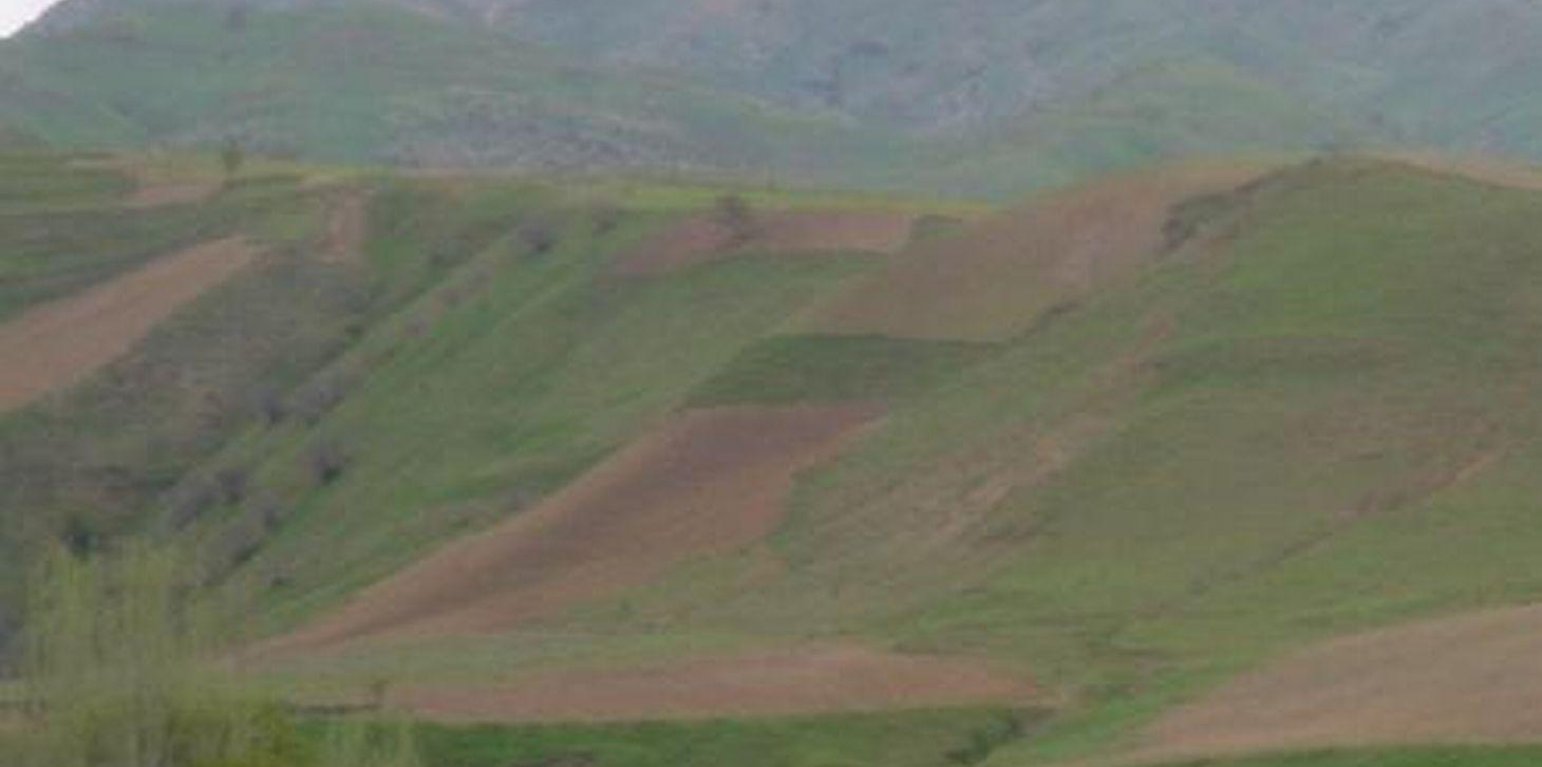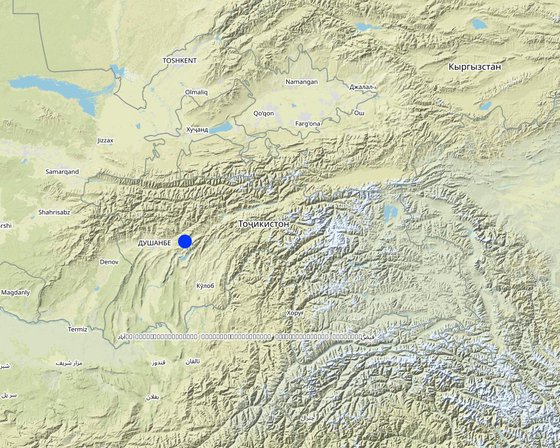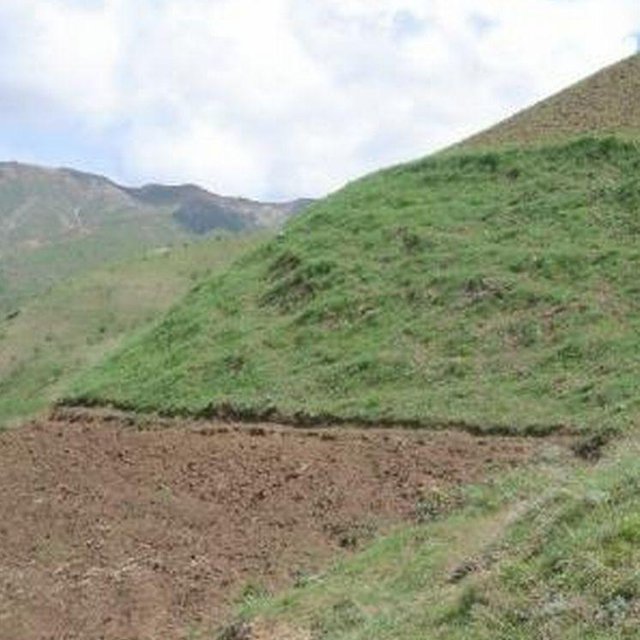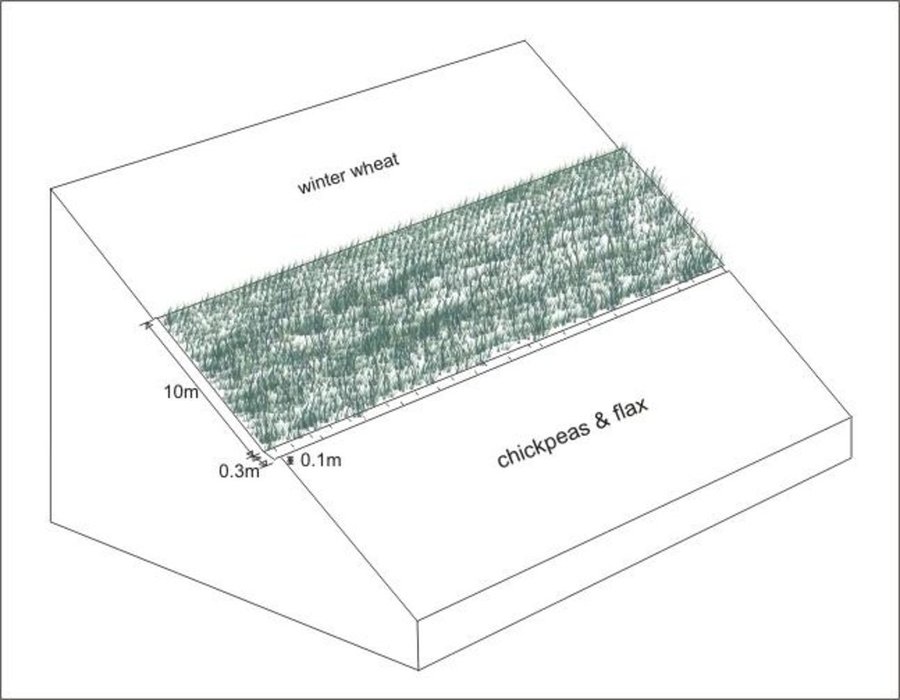



A grass strip, approximately 10m wide is left uncultivated across the upper part of the slope. This buffer strip is followed by an adjacent drainage ditch to enhance the technology’s capability of reducing run-on onto the field further down the slope. Neighbouring land users decided to implement the technology in order to reduce soil erosion on their cropland (wheat, chickpeas and flax), and to prevent disputes about land management practices. Upslope and downslope land users reported a significant reduction of observed rill development and fertility decline, emphasising that the benefits of the grass strip offset the area of crop land lost to it. The farmers paid equally for the lost cropland area.
Establishment / maintenance activities and inputs: Apart from the annual digging of the drainage ditch no establishment activities are required, since the grass strip was simply left uncultivated when the former pasture was turned into cropland. The drainage ditch needs to be cleared out of soil on a regular basis; the grass strip is cut for haymaking once during each growing season. The technology is neither cost nor labour intensive and is easy to implement. Farmers state the area lost to the grass growing as the only disadvantage. However, the grass strip alone does only reduce, not fully prevent soil erosion and should therefore be combined with other SWC technologies such as drainage ditches, terraces and/or agroforestry.

الموقع: Faizabad, RRS, طاجيكستان
عدد مواقع تنفيذ التقنيةالتي تم تحليلها:
انتشار التقنية: منتشرة بالتساوي على مساحة (approx. < 0.1 كم2 (10 هكتار))
في منطقة محمية بشكل دائم؟:
تاريخ التنفيذ:
نوع التقديم






| تحديد المدخلات | الوحدة | الكمية | التكاليف لكل وحدة (دولار أمريكي USD) | إجمالي التكاليف لكل مدخل (دولار أمريكي USD) | % من التكاليف التي يتحملها مستخدمو الأراضي |
| العمالة | |||||
| digging of drainage ditch | ha | 1,0 | 1,0 | 1,0 | |
| clearing of drainage ditch from washed in soil | ha | 1,0 | 3,0 | 3,0 | |
| إجمالي تكاليف صيانة التقنية | 4.0 | ||||
| إجمالي تكاليف صيانة التقنية بالدولار الأمريكي | 4.0 | ||||
loss of land for crop production
prevented formation of large rills